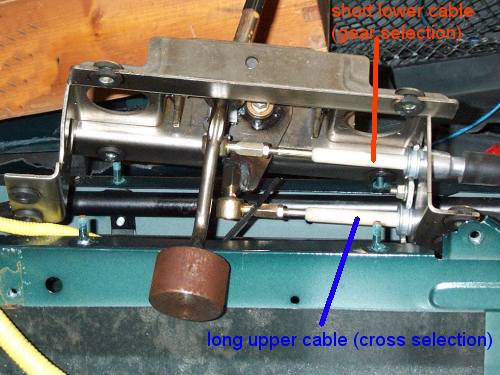Today i unpacked my Mike Satur Slick Shift gear change kit, to give me better control of gear changing in my Trophy 160...
I have chosen to not use the original gear change knob, in fitting the kit, because i see the means to have sequential gear change indication in the gear knob...
I see this type of gear knob as having the basic means to do it..
http://www.ebay.co.uk/itm/RACE-CHROME-STICK-GEAR-SHIFT-KNOB-SHIFTER-LED-BLUE-/221119324177
![Image]()
This gear knob only has one led... but has the provision to allow more...
i want six... one for each gear... and all lit when the gearstick is in neutral...
folks will say, why not have that indication in the dash...?
i dont want to change the dash.. i like it as it is...
i see that i can have gear change indication and neutral.. just by changing the gear knob ...
what i want... is to have one led for each gear change - lit, and all on when in neutral.
i want blue, its a Trophy Blue MGF..
but one could choose any colour.
i immediately see the problem of where and how to hide six wires, and power ( seven in total ) so that they are not visible on the gear shaft...
and the method needed to carry out the switching... either contact switches or proximity switches... ( ive not decided yet.. )
The effect i want is this...:
When a gear is engaged the gear number is lit... just that gear..
When in Neutral all six leds are lit..
The effect is a bright flash as one changes gear... since the crossover from one gear to another is momentary... but through neutral
when one sits with the gears in neutral.. all six leds are lit...
i think i need to use very fine lacquered wire, maybe from an old relay coil, to enable hiding the wires from the leds in the knob.. as they travel down the gear shaft...
because my car is Trophy Blue... i could use a discreet blue ( or black ) sleeve to do that...
some folks think that a dash indicator is what they want... its not what i want.. so dont tell me its better... or easier.. or preferred , i want the indicator in the gear knob..
i just share this topic on how i do it..
and... i hope folks give me some ideas to consider to achieve it...
I have chosen to not use the original gear change knob, in fitting the kit, because i see the means to have sequential gear change indication in the gear knob...
I see this type of gear knob as having the basic means to do it..
http://www.ebay.co.uk/itm/RACE-CHROME-STICK-GEAR-SHIFT-KNOB-SHIFTER-LED-BLUE-/221119324177
This gear knob only has one led... but has the provision to allow more...
i want six... one for each gear... and all lit when the gearstick is in neutral...
folks will say, why not have that indication in the dash...?
i dont want to change the dash.. i like it as it is...
i see that i can have gear change indication and neutral.. just by changing the gear knob ...
what i want... is to have one led for each gear change - lit, and all on when in neutral.
i want blue, its a Trophy Blue MGF..
but one could choose any colour.
i immediately see the problem of where and how to hide six wires, and power ( seven in total ) so that they are not visible on the gear shaft...
and the method needed to carry out the switching... either contact switches or proximity switches... ( ive not decided yet.. )
The effect i want is this...:
When a gear is engaged the gear number is lit... just that gear..
When in Neutral all six leds are lit..
The effect is a bright flash as one changes gear... since the crossover from one gear to another is momentary... but through neutral
when one sits with the gears in neutral.. all six leds are lit...
i think i need to use very fine lacquered wire, maybe from an old relay coil, to enable hiding the wires from the leds in the knob.. as they travel down the gear shaft...
because my car is Trophy Blue... i could use a discreet blue ( or black ) sleeve to do that...
some folks think that a dash indicator is what they want... its not what i want.. so dont tell me its better... or easier.. or preferred , i want the indicator in the gear knob..
i just share this topic on how i do it..
and... i hope folks give me some ideas to consider to achieve it...








